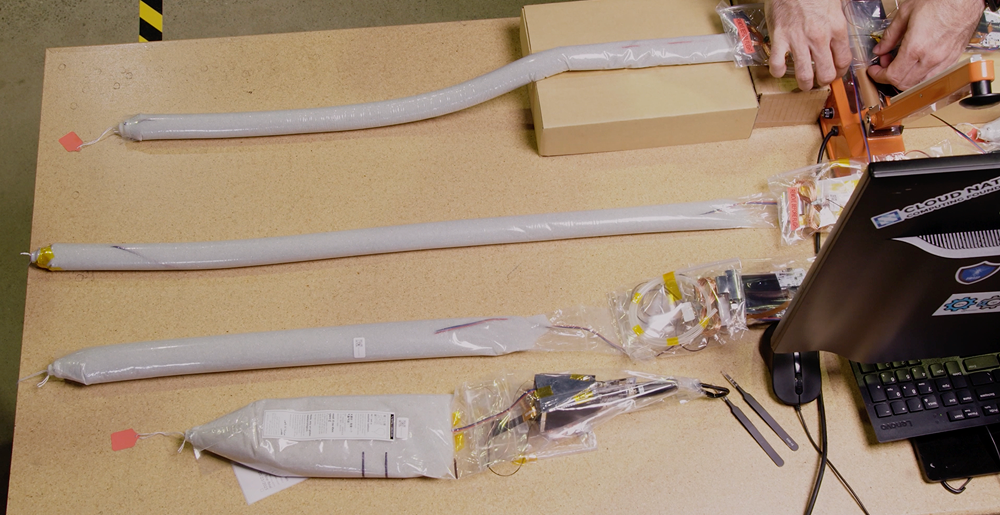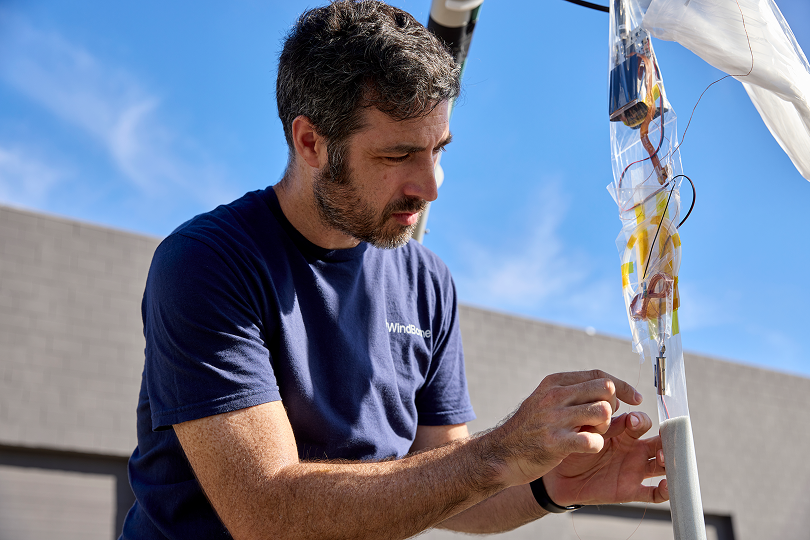Read the article
here.Since its founding in 2019, WindBorne has conducted more than 4,000 launches. We have been coordinating with the FAA for the entire history of the company and file NOTAMs (aviation alerts) for every balloon we launch. We take airspace safety very seriously. Within 24 hours of learning that the UA1093 incident could be related to us, our Atlas team of engineers shipped out new flight software and the R&D team created our first string bean ballast (named after its long, string bean-like appearance). Our goal was and continues to be: to create software that reliably gets balloons away from planes, and hardware that minimizes potential damage in the worst case collision.
So let’s get into what has changed, and let’s start with software. On Monday, October 20, we deployed new software automation to minimize the amount of time spent between 30,000 and 40,000 feet. We also added regular, automated checks to ensure enforcement across our weather balloon constellation.
We then began adding data sources on other objects in the sky, so that our balloons can steer themselves away. This is designed to work regardless of whether or not those objects are at a standard flight altitude. We also integrated data from FlightAware for aircraft position tracking. This gets analyzed in real-time to calculate new flight plans for our balloons which are uplinked via the Iridium Satellite Network. The entire process will be automated both on the ground and in the sky.
As for hardware changes, we have begun to reconfigure our ballast. Our previous ballast model had a payload weight of 2.4 pounds, or ~1 kg and was specifically designed with FAA limits and collision safety in mind. That said, spreading it over a larger area can further reduce force concentration. The best way to do this in a way that accounts for impact angle is to distribute the mass vertically. This spreads potential collision forces across a larger contact area and reduces the peak impulse per unit area. In the images of our “string-bean ballast” below, you can see the elongated length that increases the area and gives it its name.


Finally, we are forming an aviation safety advisory board to rigorously analyze the precise characteristics of our balloons beyond being within FAA weight limits. Think classic engineering: force calculations, impact modeling, and analysis of aircraft structures. Our goal is to make the worst possible effects be merely cosmetic – and with software automations make those vanishingly unlikely, no matter how many balloons we have aloft.
